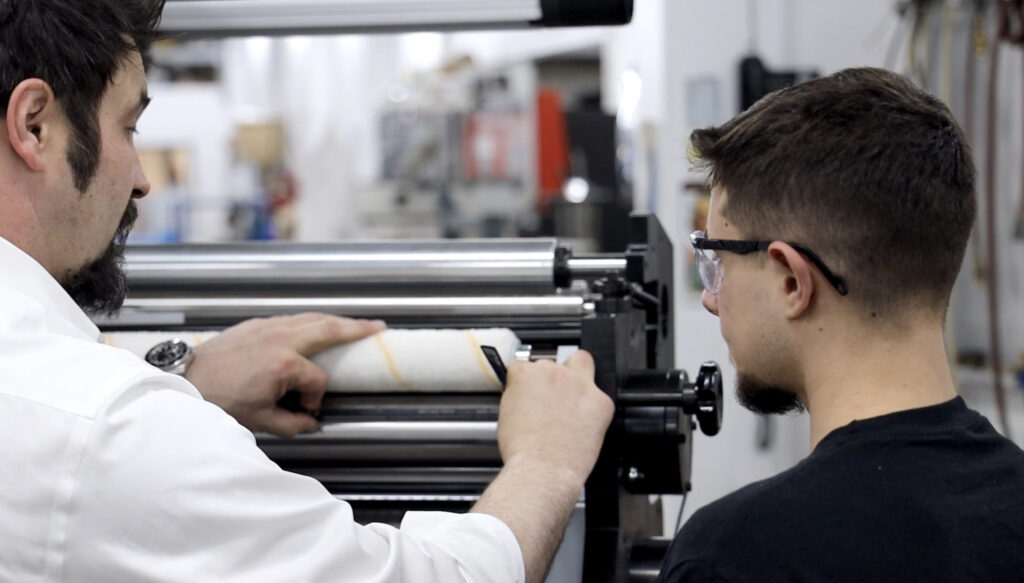In the world of printing, it is important to be competitive which means the printers also must be competitive. Choosing the right printer press for the job is crucial. Narrow web and wide web printing both have advantages and disadvantages for their applications, so keeping in mind your business’s end goal is a key component to selecting the right printing process.
Considerations for your printing requirements should include if you are looking for a printing process that has speed while maintaining quality, if the focus is more on sustainability, or if you are running smaller or larger print productions.
Narrow Web vs. Wide Web Printing
One of the main differences between narrow web and wide web printing is the width of the substrate used on the press. Narrow web printing is a good option for companies looking to print small runs while still maintaining print consistency, speed, quality, and cost savings. Generally, narrow web processes can run at a speed of a few hundred feet per minute, providing a fast production time.
Wide web printing is ideal for large-volume runs and can run at a speed of 1000 feet per minute. Further differences in narrow web and wide web printing include:
Speed:
Wide web flexo presses run faster than narrow web presses, which is one of the main differences between the two.
Width:
The material width is different for both narrow web and wide web press, with the narrow web using smaller material widths. A wider-width material allows companies to print more content because there is more space on the material.
Doctor Blade:
Narrow web presses use trailing doctor blades and an ink fountain, while wide web presses utilize chambered doctor blade ink systems. Because of evaporation issues with the ink, narrow web presses are more prone to pH variations and solvent loss in the ink fountain.
Ink Drying:
The ink formulation used is impacted by the press speed. Wide web presses typically use a solvent with faster drying capabilities than narrow web presses. Narrow web presses allow the substrate to have a thicker ink volume transferred onto it.
Narrow Web Flexo Printing Advantages
Narrow web printing has gained a great deal of popularity due to its ability for fast and accurate printing on smaller production runs. Narrow web printing is also cost-effective and less expensive than other traditional printing processes, which is an advantage for many companies. Narrow web flexo printing is also efficient and cuts down printing time from hours to mere minutes.
Wide Web Flexo Printing Advantages
Companies who are running large production volumes often choose wide web printing because you can print more on the wider material. With fewer variables and higher volume capabilities, wide web printing is a great option.
Tamarack® Products leads the industry in designing, engineering, and manufacturing integrated solutions like their Versa Web P500 inline web finishing equipment. The P500 is a modular design labeling system that can easily be installed into new equipment or your current press to produce business forms, folding cartons, envelopes, direct mail, or promotional products. The P500 is fully customizable and engineered to meet your business’s unique needs.
Tamarack® Products delivers innovative web finishing solutions by designing custom flexographic equipment to your desired specifications. We have over 50 years of experience in designing and manufacturing web finishing equipment like our Versa Web P500 that can be converted with RFID insertion equipment to meet the evolving application needs of your business. Contact us to learn more about our flexo printing solutions and the benefits that narrow web and wide printing can bring to your business.





